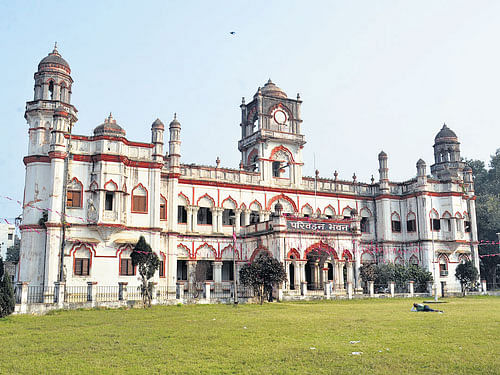
All those who have visited Rajasthan must have been mesmerised by the majestic star-graded accommodation in Jaipur, Udaipur and Jodhpur. Taking a leaf out of Rajasthan book, the Bihar’s Tourism Department is mulling over a proposal to develop at least two of Patna’s architectural marvels and heritage monuments into “palace hotels”, much like in Jaipur and Jodhpur.
The nodal agency – the Bihar State Tourism Development Corporation (BSTDC) – is in advance stage of negotiations where it plans to take over the two splendid monuments – Sultan Palace and Rizwan Castle – and build five-star category hotels in a city where there is an acute dearth of government-run star hotels. Now, the Sultan Palace is known as Parivahan Bhavan, as it’s under the control of the transport department, where Bihar State Road Transport Corporation (BSRTC) has the headquarters on its sprawling premises.
The palatial Haveli, before being called Sultan Palace, was built by Sir Sultan Ahmed on Beer Chand Patel Marg in 1922. The records say that it took Sultan two years to get it constructed at a cost of Rs 3 lakh (a substantial amount in those days).
Born in 1880, Sultan was an eminent lawyer (then called barrister) before becoming a judge of the Patna High Court. Apart from his stint as the judge, Sir Sultan Ahmed was also the first Indian Vice-Chancellor of Patna University from 1923 to 1930. A legal luminary, an educationist and an academic, Sir Sultan was invited for the Round Table Conference (1930-31). After participating in the meet, Sultan was appointed a member of the Viceroy’s Executive Council. He passed away in 1963, but left a heritage monument for next generation.
“Sultan Palace is a perfect example of Islamic architecture. Its palatial looks come from its high-domed tower in the centre and the domed pavilions at the two ends of the roof. This is further stressed by the slender minarets rising at the angles and the series of multi-foliated arches in the facade,” former Secretary of the Art, Culture and Youth Affairs VK Singh told Deccan Herald.
“The Haveli, as Sultan Palace is fondly called, was constructed in two parts. The front portion was meant for men while the rear one for the women,” Singh said. The most important portion was the drawing room in the front with a fireplace, mouldings and an ornamental ceiling painted with the gold powder.
The BSTDC plans to develop this architectural marvel into a royal lodging accommodation on a par with any five-star or palace hotels in Rajasthan. “Of late, we realised that there was a need for government-run star category hotels in Bihar. We have, therefore, selected Patna, Rajgir and Bodh Gaya as the three places to start with. It’s against this backdrop that we thought of utilising Sultan Palace and Rizwan Castle,” said BSTDC Managing Director Mohammad Sohail.
Finest examples
“These monuments are one of the finest examples of architecture of yhe Raj-era. But the two buildings, constructed in early 20th century, are not in good shape. We will try to restore them first before giving them a proper shape of a star-graded hotel,” he added.
Notably, a large number of foreigners, mostly Buddhists, fly to Patna from Japan, China, Vietnam, Sri Lanka and Indonesia, before leaving for Rajgir and Bodh Gaya, the two pilgrim centres that are about 120 km from Patna. It’s against this backdrop that the Bihar’s tourism department wants to have its own magnificent accommodation and encash the large inflow of tourists.
“We have set the ball rolling for possession of Sultan Palace. At present, it is under the possession of transport department. We have proposed that the Sultan Palace, be handed over to the BSTDC and shift headquarters of the BSRTC to their depot in Phulwarisharif, where they have nearly 100 acres of vacant land,” an official of the BSTDC said. “If required, we can lend a helping hand in developing the headquarters of the BSRTC at Phulwarisharif,” he averred.
Rizwan Castle, the building near Dak Bungalow crossing is used as a small accommodation for Bihar cops. Rizwan Castle was the residence of Syed Hasan Imam (1871-1933), a leading barrister-cum-politician of Patna, who designed it to resemble Tudor Castle of Scotland.
Built in the early 20th century, it’s a beautiful piece of architecture where the four bastions at its four corners give it a look of the castle. This is further accentuated by the battlements on its parapet. Gothic arches were freely used all over with tracery in cross-shaped used for the windows.
The BSTDC feels that once the plan is approved and the ownership is transferred besides other formalities cleared, it would approach the infrastructure development authority to initiate steps for renovation of the two buildings and thereafter develop the proposed hotels. “The hotels will be developed in the public-private-partnership mode,” said the official.